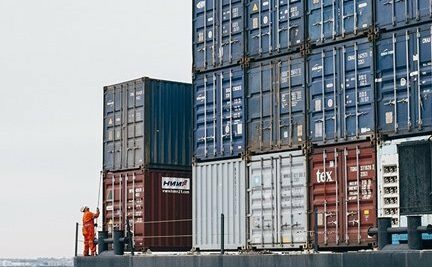Criminals using 3D printing present growing threat to global shipping

Security firm G4S warns on a new enterprising way that thieves are getting into containers.
Criminal gangs are making use of cheaper and more accessible 3D printing technology to present a growing threat to shipping across the world.
Law enforcement and industry professionals have seen a rise in the use of the technology to steal shipments of goods ranging from food and drink to electronics and home and garden products.
Now G4S has issued a series of alerts to the shipping industry offering advice how to combat the growing threat.
While 3D printing – also known as additive manufacturing – has existed since the 1980s, technological advances mean the process now costs just hundreds of pounds rather than hundreds of thousands, putting it within reach of cargo thieves.
In as little as 10 minutes, criminals are able to create counterfeit security devices, such as cargo seals, security locks and keys.
After breaking into shipping containers and stealing the contents, the thieves replace the seals with 3D printed replicas to cover their tracks – making it difficult to pinpoint the exact time or location of the theft.
To help combat this, G4S has issued warnings to clients and employees who provide supply chain security-related services – including guards at gates and loading docks.
“We want to ensure that people are alert to this emerging threat and watching for it,” said Robert Dodge, Senior Vice President, G4S Corporate Risk Services.
“Some supply chain security programme clients are further sharing the information with their business partners who might use high-security seals.
“US Customs and Border Protection has welcomed the fact we are sharing details of this threat with the business community and appreciated this information.”
As well as the reduced cost of 3D printing technology, the process also no longer requires the specialised knowledge it once did, making it easier than ever before for criminals to produce counterfeit security devices.
Dodge explained: “For just a few hundred dollars you can purchase a 3D scanner that eliminates the need to understand computer-aided design (CAD).
“It will not only provide the dimensions for any item but also creates the CAD technical specifications needed to produce a near-perfect replica.”
Advice from G4S includes:
· Conduct a professional, third-party security assessment of any company used for shipment of goods
· Conduct thorough background checks on shipping company employees
· Analyse shipping methods to identify alternative routes and delivery times, to avoid predictability
· Avoid placing company logos on company-owned cargo containers
· Place GPS devices in random shipments
· Install motion-activated, internet-based cameras inside random containers to capture footage of door being opened
· Alternate colour of seals and periodically change them to make it harder to produce replicas
